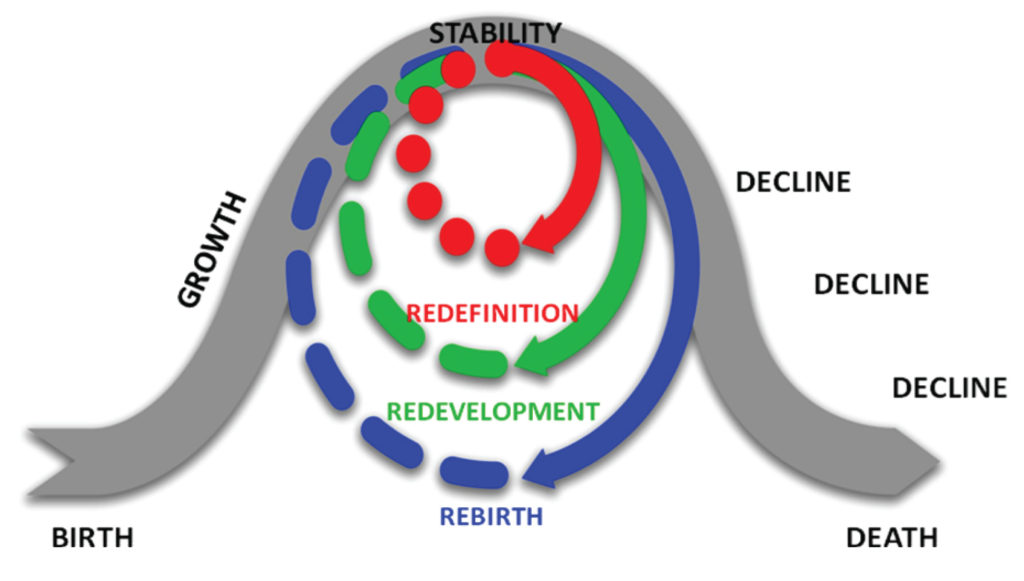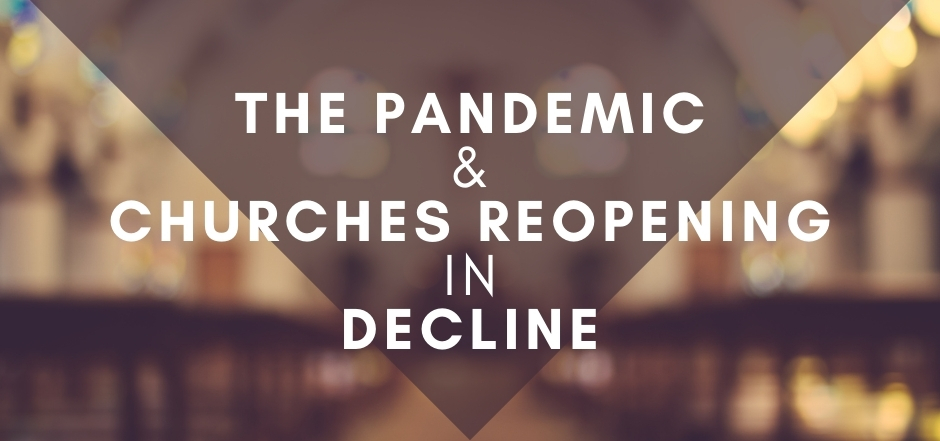The Rev. Dan Smith, rector of Holy Cross in Sanford and former canon to the ordinary in the Diocese of Missouri, serves as a consultant to the Diocese of Central Florida.
Like all of us, I have been giving a lot of thought lately to what the church and the congregation I serve will be like once we have opened completely. It certainly looks like we are heading toward that point after a year of being closed or partially closed. Programs have been curtailed. How we worship has been altered. Parts of our physical plants, parish halls, classrooms and meeting rooms have gone largely unused. In this thinking, I have found myself returning to some of the basics of congregational development.
The Lifecycle of Congregations
 One of the basic theories of congregational development is the lifecycle of congregations. Let me give a thumbnail reminder of this well-known theory. Congregations, like all organizations and organisms, have a life cycle.
One of the basic theories of congregational development is the lifecycle of congregations. Let me give a thumbnail reminder of this well-known theory. Congregations, like all organizations and organisms, have a life cycle.
A congregation begins as all things do with birth. A church planter and maybe a planting team goes to a new area and starts a new congregation. This birth process takes a while, perhaps as long as five years. After the birth process, there is a time of formation and growth. This is an exciting time in a congregation’s life. They grow in numbers, buildings are constructed, programs are initiated, norms and identity are established. This formation time may last as long as a decade. Following the formation time, there is a time of stability. Perhaps a decade or more. Congregations who have passed this stage think of it as the “golden age.” Programs are up and running, life is exciting, for the most part, everyone is happy. Left alone without any intervention, congregations (like any organization) enter a time of decline after stability. Decline can have its roots in outside factors as well as inside factors. The point is that decline is inevitable if we are not paying attention. If decline is allowed to continue unabated, the next stage in the lifecycle is death.
Obviously, there is great energy and excitement during the first three stages of the lifecycle. The danger particularly during the third stage, stability, is to rest on the achievements of the past and assume they will continue. Congregations that stay on top are constantly redefining who they are and what their mission and ministry are. They work to be innovative while maintaining their norms and traditions.
Redevelopment
Congregations that are in decline need to take a more aggressive approach to halt the decline. These congregations need to redevelop. Redevelopment usually requires significant change. Change that might even change well-established norms and traditions. I have seen congregations during redevelopment radically change their leadership style, style of worship, even names or locations. The point is that the intervention that is redevelopment is significant and might seem costly. All of us know that the intervention at the time of the death of a congregation is resurrection, although congregational development people call it redevelopment or reformation. One thing dies and another comes to life.
The Pandemic, Decline & Moving Forward
The reason I have shared this information is that I believe as the result of this past year, a year of a pandemic, that every one of our congregations ought to at least consider that they have been thrust into decline and need to think of mission and ministry moving forward as redevelopment work. Our congregations are not going to look the same. Anyone who tries to simply go back to the way it was will, I believe, be disappointed. I was recently talking to a rector of a resource-size congregation in another diocese who says he is treating this time as a restart. That may be a little overstated, but the overstatement will not hurt near as much as understating the place we find ourselves.
Now is the time to take a full and honest look at our program life, the various ministries of the congregation and how we worship and serve our communities. Some things will not return, we can honor those and say goodbye to them. It is time for some new programs to be born. We already know some of the changes that are with us; for instance, I do not see live streaming worship going away. There will be many others. I am convinced that now is a time for creative leadership and innovative thinking.
I hope we can share with one another. Because if my thinking is correct, we are all at the same place on the lifecycle.

